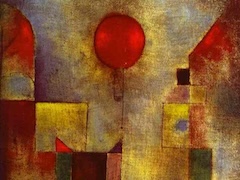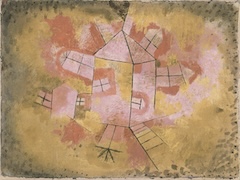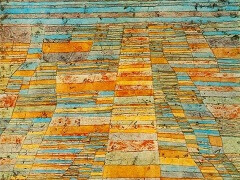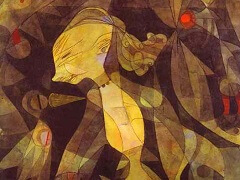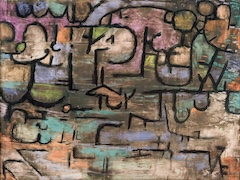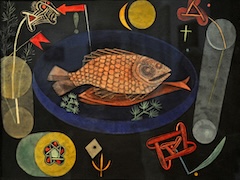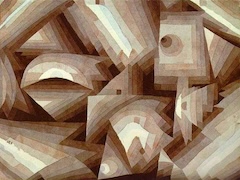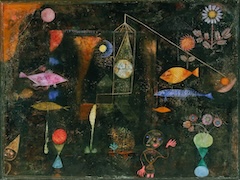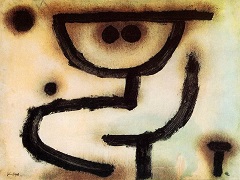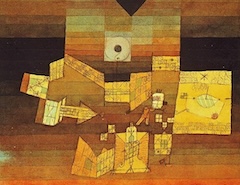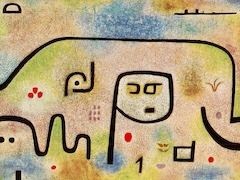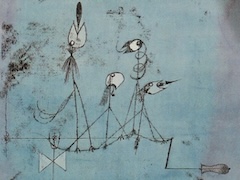Senecio, 1922 by Paul Klee
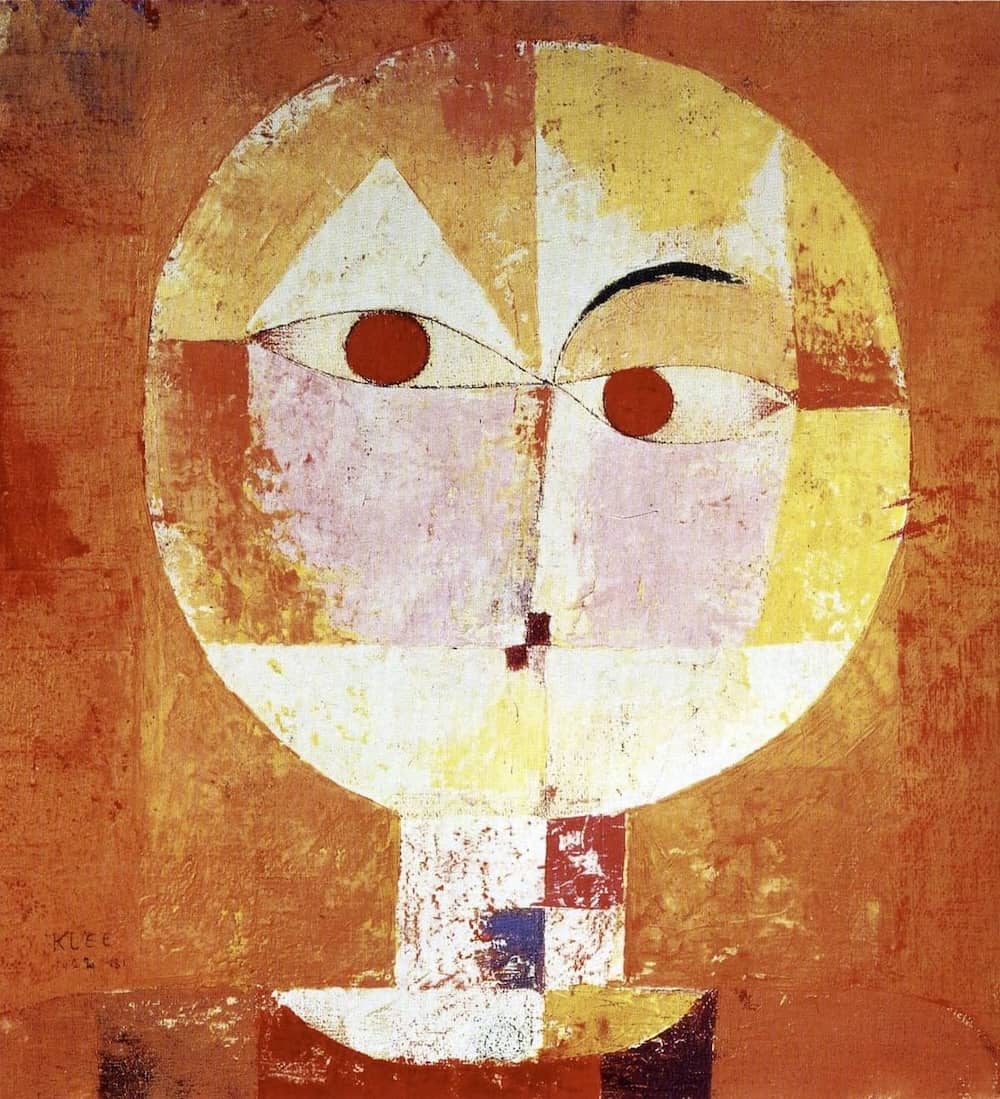
Completed in 1922, Senecio is a manifestation of Paul's sense of humor and African culture. The simple colors and shapes, Paul makes use of various shades of orange, red, and yellow to reveal portrait of an old man. Artistic use of shapes gives the false impression that one eye browse is raised. His left eye brow is represented by a triangle while the other one is made of a simple curved line. The portrait is also called Head of a Man Going Senile and intentionally mimics children's artwork by using ambiguous shapes and forms with minimal facial details.
This adaptation of the human face is divided by colour into rectangles. Flat geometric squares are held within a circle representing a masked face and displaying the multi-coloured costume of a harlequin. A portrait of the artist performer Senecio, it can be seen as a symbol of the shifting relationship between art, illusion and the world of drama. This painting demonstrates Klee's principles of art, in which the graphic elements of line, colour planes and space are set in motion by an energy from the artist's mind. In his imaginative doodlings, he liked, in his own words, to "take a line for a walk" .


